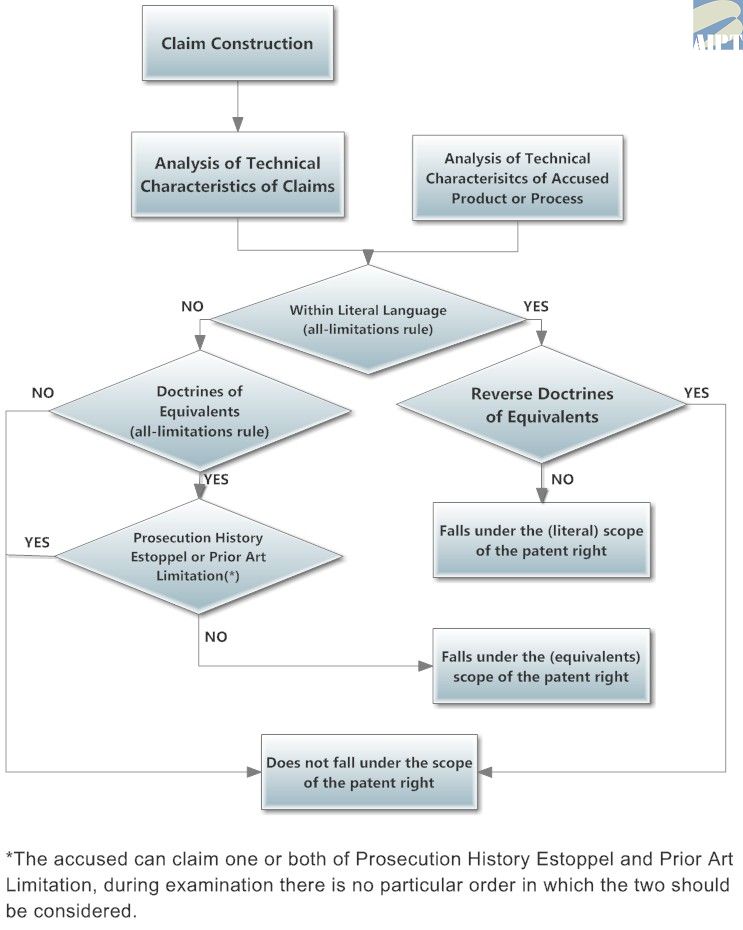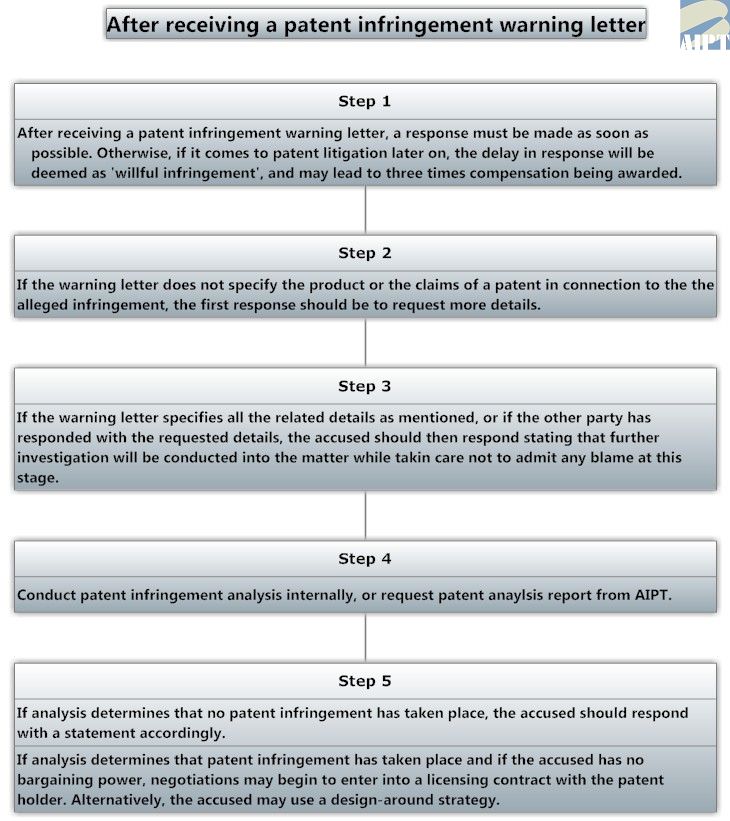COMPANY PROFILE
In patent infringement disputes, one or both parties will undertake patent infringement analyses in order to determine whether infringement has taken place. The procedure for such an analysis is detailed below:
Steps in Patent Infringement Analysis

First, claim construction must be conducted as to the scope of the "literal" language of the claims so that further analysis can compare the accused product or process with the properly construed meaning of the claims. Then, two categories of patent infringement are considered: literal infringement and doctrines of equivalents, respectively.
(1) Literal Infringement – means that each and every element stated in the claims has identifcal correspondence in the alleged infringing product or process. The all limitations rule means that each element of a claim must be present in an allegedly infringing device in order to establish literal infringement.
(2) Doctrines of Equivalents – if there is no literal infringement, a claim may be infringed under the doctrine of equivalents if some other element of the accused device or process performs substantially the same function, in substantially the same way, to achieve substantially the same result.
If the accused product or process is found to be within the literal language of the claims, there is another factor to considering before determining if there is infringement. The reversed doctrine of equivalents is used when the accused product or process falls within the literal words of the claims, but it performs the same or similar function in a substantively different way and have ceased to represent the patent’s invention, then it shall be determined that the accused product or process does not fall under the scope of the patent right and no infringement has taken place.
Other the other hand, if the doctrines of equivalents is applied which expands the scope of the claims beyond their literal language to the true scope of the inventor’s contribution to the art, there are also limits to the scope of equivalents to which the patent holder is entitled. Two such limits are also considered in the analysis: prosecution history estoppel and prior art limitation.
(1) Prosecution history estoppel (also known as file-wrapper estoppel) – the history of the patent’s prosecution is considered to see if the applicant had amended the application by narrowing the claims in order to avoid rejection. The patent owner cannot claim during litigation that the scope of the claims contain the parts removed during the prosecution of the patent.
(2) Prior art limitation – the patent owner cannot be entitled to the expanded scope of the claims using the doctrine of equivalents if the scope of equivalency sought would encompass prior art.
Patent Infringement Warning Letters
Before patent infringement litigations, most often the patent holder will (although not obligated) send a warning letter to the alleged infringer notifying them of the infringement and asking them to cease all infringing activities. The accused must act quickly according to the steps below in order to avoid litigation or paying compensation.

If all parties cannot come to an agreement in the patent infringement dispute, the patent right holder may file a patent infringement civil suit against the accused. Since 2003, all patent infringements have been decriminalized and are only covered by civil law provisions. The Intellectual Property Court (IP Court) is the centralised trial court for the first and second instances of patent infringement related cases.
Patent Infringement Litigation at the IP Court
The diagram below shows an example of the patent infringement litigation first instance process in the IP Court. The exact time spent in each step varies in different cases, subject to the varying facts in individual cases and court adjustment based on parties’ motion and statement

Sources:
(1) Intellectual Property Court (2014)
(2) Intellectual Property Office, Ministry of Economic Affairs R.O.C. (2014)







